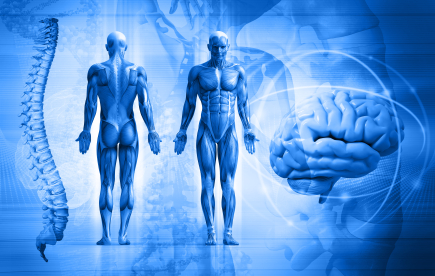The Biology of Kundalini
At first the Kundalini process may seem to be something totally outside of our current understanding of how the body works. But in fact, it is the activity of this mechanism, in a reduced or limited form, which maintains and controls the overall functioning of our body at all times.
This mechanism functions at a much higher level in the process of gestation. In the space of nine short months a single fertilized ovum divides, grows and develops into a living, breathing, thinking human being. This body is made up of hundreds of billions of cells, of countless different types, all working in near-perfect harmony from the moment we are born.
After birth, as we grow and mature, the mechanism operates at a less active level. But, if it becomes active again as a consequence of spiritual practices or hereditary predisposition, it begins a new phase, similar in some ways to the gestation process. Then the brain and nervous system of the individual are ‘upgraded’ so that a higher level of mental functioning is possible.
Today it is generally believed that the genetic code is responsible for this process of development and growth in the womb. But even though a building plan may specify every last detail of a building’s structure and composition, it does not actually fabricate the building. This is achieved by the guiding intelligence of the construction team.
In a similar way, it is the super-intelligent principle prana which, using the genetic code as a blueprint, coordinates and controls the overall ‘construction’ of the new human being. It is simply our inability to directly perceive prana that leads us to believe that the process is guided and controlled by the genetic code.
Bio-Plasma and the Kundalini Process
The brain and nervous system are composed of sensory and motor neurons. At its current level of understanding, science believes that neurons are activated solely by electro-chemical processes and that impulses are transmitted from cell to cell via the synapses. The brain communicates with the rest of the body through the spinal cord and nerves.
But the esoteric traditions of India speak of a subtle substance pervading every cell of the body called prana (sometimes referred to as ‘bio-plasma’ or 'bio-energy' in the West). Prana is held to be the medium by which thought activity is carried on in the brain and is involved with the transference of impulses and sensations in the nervous system.

In the normal state of consciousness, a limited quantity of prana is collected by the nerves and sent to the brain via the spinal cord. In a Kundalini process, (usually as a consequence of meditation or concentration), new areas of the brain are stimulated into activity. When this happens, the quantity and quality of prana going to the brain must be enhanced. If this does not happen, the process may not work properly, leading to severe distress for the individual.
The most concentrated form of prana is said to be located in the sexual / reproductive organs. It is the basis of vitality and of the pleasurable sensations we experience during sex. When the brain starts to function at a higher level of activity, the Kundalini mechanism will temporarily draw on this reservoir in order to provide the brain with the necessary quantity of pranic fuel
It is for this reason that conservation of the sexual essences through abstinence, during very active stages of the process, is recommended in many spiritual traditions.
Related ICR Resource:
The Awakening of Kundalini
This book deals specifically with the subject of meditation and with the question, "What should everyone know about higher consciousness?"





